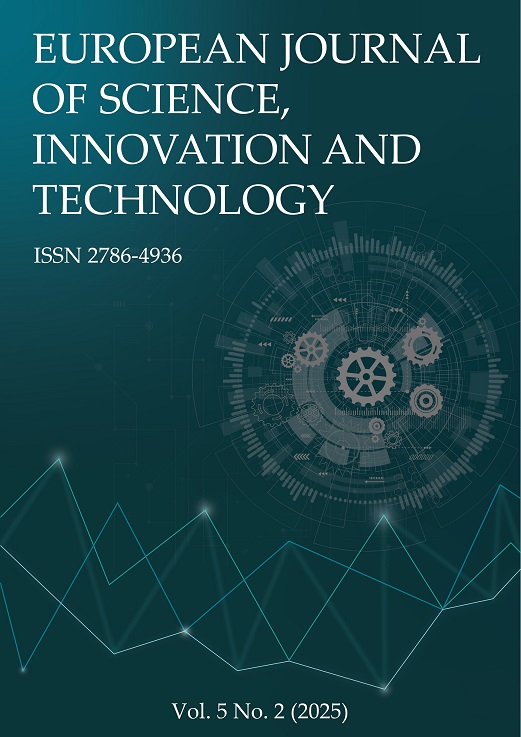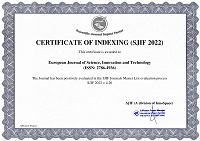A Review of the Global Effects of Cherax quadricarinatus on Native Biodiversity in Non-Native Ecosystems
Abstract
Cherax quadricarinatus, also known as the red claw crayfish, is an alien invasive species (AIS) in numerous freshwater ecosystems outside its native range in northern Australia and southern New Guinea. Its introduction to non-native ecosystems, often driven by aquaculture, accidental incidents and the pet trade, has significant ecological implications for native biodiversity. This species' adaptability to various environmental conditions and high reproductive rate facilitates its establishment and spread in new habitats. The presence of C. quadricarinatus in non-native ecosystems results in several detrimental effects on native biodiversity, including competition with indigenous crayfish and other aquatic species for resources, predation on native species, and alteration of habitat structures.
C. quadricarinatus competes directly with native crayfish species, often leading to a decline in native populations due to its aggressive behavior and more efficient resource utilization. This competition extends to other aquatic invertebrates and small vertebrates, resulting in reduced biodiversity and disruptions in local food webs. Predation by C. quadricarinatus on native fish, amphibians and invertebrates further exacerbates these impacts, often leading to declines in vulnerable native populations. In addition, the burrowing behavior of C. quadricarinatus causes physical alterations to habitats, such as increased sedimentation and destruction of aquatic vegetation, which are crucial for the survival of many native species. These habitat modifications can lead to long-term changes in ecosystem structure and function, affecting water quality and availability of resources. Hybridization with native crayfish species can occur, leading to genetic dilution and loss of unique genetic traits in native populations. C. quadricarinatus crayfish can carry diseases and parasites that may infect native species.
References
Köck, G., Tait, L. & Füreder, L. (2018). Effects of introduced crayfish on native species. Hydrobiologia, 825(1), 47-60.
Lipták, B., Mrugała, A., Pekárik, L., Gruľa, D., Mutkovič, A., Petrusek, A. & Kouba, A. (2017). Expansion of the red claw crayfish (Cherax quadricarinatus) in the wild in the tropical Americas. Knowledge and Management of Aquatic Ecosystems, 418, 31.
Madzivanzira, T. C., Weyl, O. L. F. & South, J. (2022). Ecological and potential socioeconomic impacts of two globally-invasive crayfish. NeoBiota, 72, 25–43. https://doi.org/10.3897/neobiota.72.71868
Magalhães, A. L. B., Serejo, C. S. & Buckup, L. (2017). Biological invasions and the conservation of biodiversity in Brazilian inland waters. Oecologia Australis, 21(3), 207-237.
Morningstar, C.R., Daniel, W.M., Neilson, M.E. & Yazaryan, A.K. (2020). The first occurrence of the Australian red claw crayfish Cherax quadricarinatus (von Martens, 1868) in the contiguous United States. BioInvasions Records, 9, 120–126. https://doi.org/10.3391/bir.2020.9.1.16
Muhoho, J. M., Otieno, P. E., & Mungai, N. W. (2020). Impact of red claw crayfish (Cherax quadricarinatus) on aquatic ecosystems in Kenya. East African Journal of Ecology, 23(1), 15-26.
Nunes, A. L., Zengeya, T. A., Measey, G. J. & Weyl, O. L. (2017). Freshwater crayfish invasions in South Africa: Past, present and potential future. African Journal of Aquatic Science, 42(3), 309-323.
Reynolds, J. D. (2011). A review of ecological interactions between crayfish and fish, indigenous and introduced. Knowledge and Management of Aquatic Ecosystems, 401, 10. http://dx.doi.org/10.1051/kmae/2011024
Rodrigues, L. C. & Freire, C. A. (2020). Invasive potential of Cherax quadricarinatus in Brazil: A threat to biodiversity. Journal of Aquatic Invasive Species, 15(2), 139-152.
Sallehuddin, A. S., Kamarudin, A. S., & Ismail, N. (2021). Review on the global distribution of wild population of Australian Redclaw Crayfish, Cherax quadricarinatus (von Martens, 1868). Bioscience Research, 18(SI-2), 194-207. Retrieved October 30, 2023, from https://www.researchgate.net/publication/354792147_Review_on_the_global_distribution_of_wild_population_of_Australian_Redclaw_Crayfish_Cherax_quadricarinatus_von_Martens_1868
Sanjar, A., Davis, D. R. & Kline, R. J. (2023). Evidence of an established population of Cherax quadricarinatus (von Martens, 1868) in south Texas, USA. BioInvasions Records, 12(1), 284–291. https://doi.org/10.3391/bir.2023.12.1.24
Sodsuk, P. & Nabhitabhata, J. (2020). Invasive crayfish in Thailand: Impacts and management strategies. Journal of Environmental Management, 269, 110829. https://doi.org/10.1016/j.jenvman.2020.110829
Twardochleb, L. A., Olden, J. D. & Larson, E. R. (2013). A global meta-analysis of the ecological impacts of non-native crayfish. Freshwater Sci., 32(4), 1367–82. https://doi.org/10.1899/12-203.1
Wang, Y., Zeng, Y., Li, Q. & Guo, Z. (2018). The invasion and spread of Procambarus clarkii (Girard, 1852) in China. Biodiversity Science, 26(2), 181-184.
Copyright (c) 2025 Geofrey Makwelele, Katongo Cyprian, Makeche Mauris, Masuzyo S. Nyirenda, Matthews Mwambo

This work is licensed under a Creative Commons Attribution 4.0 International License.


 ISSN
ISSN 











